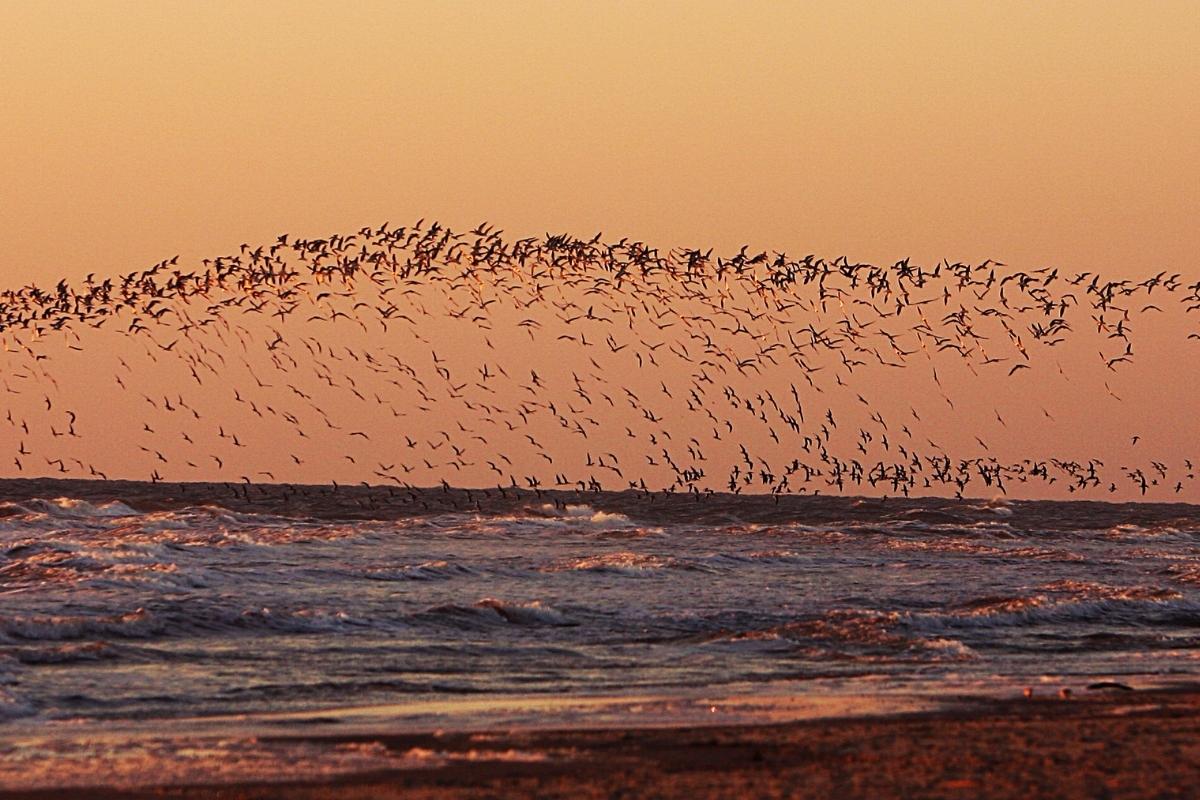The fascination that Kingdom Animalia provokes in anyone who discovers the ingenuity with which animals articulate and relate to the world is undeniable; one of the examples that best illustrates this statement is, of course, migration. Certain factors predominate in this process, such as lack of food, scarcity of water and reproduction. With that in mind, the 16 greatest animal migrations have a lot to teach us.
Changing habitat temporarily or permanently raises the question that all habitats in the world are connected. Moreover, it highlights the biological capacity of adaptation and resilience of animals, inspiring, in fact, for those who consider the planet as a true Mother Earth.
Animal forms of migration occur mainly by swimming, flight, long walks and floating. Follow this super interesting list of the 16 greatest animal migrations.
The greatest animal migrations: 16 migratory species to discover
Migration is an important event for several species. However, the simple act of going from one place to another also reveals the beauty of nature, because it creates a real spectacle. In this context, learn more about the 16 greatest animal migrations.
1. Bald Eagles
Speaking of beauty, bald eagles migrate every winter to a location near the town of Brackendale in the Canadian province of British Columbia. Each year, it is possible to observe more than 1,500 eagles feeding on the salmon, which are “available” in abundance in the rivers of the region. It should be noted that this is the only endemic species in North America.
2. Emperor penguins

When it comes to migration, emperor penguins are probably the best-known species. Not surprisingly, the documentary A Marcha dos Penguins (2005) depicts the admirable feat of these animals religiously repeated every year, so long is the walk of a kilometer, accompanied by the intense cold of Antarctica.
Emperor penguins migrate between late October and early December in order to breed.
3. Reindeer

Especially in June, the National Wildlife Refuge in northern Alaska peaks in the reindeer population due to migration.
There are more than 3 thousand kilometers between Canada and the refuge. However, the distance does not seem to be an obstacle for the reindeer who go in search of food.
4. Flamingos

Thousands of flamingos migrate each year, between April and June, to Lake Nakuru, 140 km from Nairobi, the capital of Kenya. The event is one of the most beautiful in migration: waters taken by animals that form a single image and in pink. It is estimated that over 250,000 birds migrate in search of algae found in the area.
5. Sea turtles

Feeding, maturing and spawning are the main reasons why sea turtles go on migration. Ancient and dear ocean walkers, they can travel more than 16,000 miles.
According to scientific records, sea turtles migrate across the Pacific Ocean between Indonesia and the west coast of the United States and Canada. Another impressive behavior of these animals is that the turtles return to the beach where they were born to lay their eggs.
6. Whales

There are several marine mammals that migrate. However, none go as far as the whales. The gray whale, for example, can travel up to 14,000 miles in a single annual migration.
Due to climate change and consequent increase in surface temperature, there has been a seasonal shift in whale migration. Thus, during the winter months, each species migrates to warmer waters to breed and give birth. In summer, they swim in the cold waters of the Antarctic or Arctic oceans in search of food.
7. Wildebeest

Between the months of June and July, the wildebeest migration takes place, but it is also possible to observe zebras, gazelles, lions and others in the same movement. This is perhaps the most visible migration in the wild, as wildebeest travel by the millions in search of food. The journey takes place from the southern part of the Serengeti Desert in Tanzania to the Masai Mara in Kenya and then they return.
However, it is not an easy journey, as more than 250,000 wildebeest are estimated to fall victim to predators and other dangers, such as disease, starvation and drowning.
8. Dragonflies

“Epic migration” is the most apt term when it comes to dragonfly migration. This is because it is the longest known insect migration. Long and extraordinary: the migration spans 4 generations and each plays a super important role in terms of relay.
In 2009, scientists found that dragonflies travel a route from India to the Maldives, Seychelles, Mozambique, Uganda (Africa) and vice versa, reaching 18,000 kilometers of travel.
9. Salmon

The Earth’s magnetic field is the salmon’s compass during migration. The species travels miles in fresh water and up to 1,000 miles in the ocean to places where it can find food.
Then they ascend to mountain streams to find the perfect match and mate. When spawning, they find their way back home by smell.
10. Seals

Each year, seals cover a distance equivalent to 1/4 of the world tour. Elephant seals spend around 250 days at sea during their migration. All this effort is given by the search for food.
11. Monarch Butterflies

To protect themselves from winter, each October, monarch butterflies arrive in the Pacific Grove region of California. However, throughout the year they face a long journey from Mexico to Canada, occasionally crossing the Atlantic Ocean.
12. Bats

Not all bat species are migratory. However, the migration of these animals is the most abundant and spectacular in nature: 10 million bats cover the sky as far as Kasanka National Park. There they find their favorite fruits in the Mushitu swamp forest. Then they continue to migrate to Africa.
13. Sharks

Whether in search of food or to warm up, some species of sharks undertake great migrations. As is the case with the white shark, which crosses the Indian Ocean between South Africa and Australia and returns in a year.
The whale shark also breaks records in its migratory journeys, being able to swim up to 12,000 miles.
14. Red crabs

Between November and December, red crabs migrate from Christmas Island, Oceania. Millions of newly hatched crabs travel from the interior of the island to the coast on a journey that can take weeks.
Occasionally, the crabs form a moving red carpet that forces temporary road closures.
15. Tunas

The fastest migrating fish in the oceans, tuna travel enormous distances. The Pacific bluefin tuna, meanwhile, will travel countless times throughout its life, approximately 5,000 miles, between where it lays its eggs in Japan and California.
16. Arctic Tern

There are about 80,000 kilometers traveled in a long round trip made by the Arctic Tern. Every year these birds migrate from the arctic to the antarctic interact with a wide variety of ecosystems along the way, as they only take selected routes.
Was this article helpful?
YeahNope

“Prone to fits of apathy. Beer evangelist. Incurable coffeeaholic. Internet expert.”







